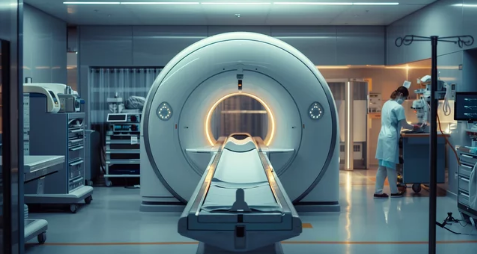Magnetic Resonance Imaging (MRI) has become a cornerstone in modern oncology, providing unparalleled detail of soft tissues and enabling the accurate detection, staging, and monitoring of cancers. But MRI scans do not exist in isolation. Their true power is realized when they are interpreted, shared, and applied within a multidisciplinary cancer care framework, where different specialists collaborate to design the most effective treatment strategies for patients.
This article explores how MRI results are integrated into multidisciplinary care, why this approach improves outcomes, and what best practices ensure MRI findings directly benefit patients.
The Role of MRI in Cancer Management
MRI scans provide crucial insights at various stages of cancer care:
- Early Detection – MRI helps identify cancers that other imaging methods might miss, particularly in high-risk patients.
- Staging – By visualizing tumor size, location, and spread, MRI contributes to accurate cancer staging, which determines treatment pathways.
- Treatment Planning – MRI guides surgical strategies, radiation planning, and systemic therapy decisions.
- Monitoring Response – Repeat MRI scans allow teams to track whether treatments are shrinking tumors or if disease progression is occurring.
- Post-Treatment Surveillance – MRI helps differentiate between scar tissue, inflammation, and true recurrence.
While MRI is a powerful tool, its findings must be interpreted in context with pathology, laboratory data, and clinical evaluation.
Why Multidisciplinary Integration Matters
Cancer is rarely managed by a single doctor. Instead, it requires collaboration among various specialists:
- Radiologists – Interpret MRI scans and highlight findings relevant to diagnosis and staging.
- Oncologists – Use MRI data to guide systemic therapies like chemotherapy, immunotherapy, or targeted drugs.
- Surgeons – Depend on MRI results to plan tumor resections and assess operability.
- Radiation Oncologists – Use MRI for mapping treatment fields and protecting surrounding healthy tissue.
- Pathologists – Correlate imaging results with tissue analysis to confirm diagnoses.
- Nurses and Allied Health Professionals – Support patients by helping them understand imaging results and treatment implications.
By integrating MRI results into these conversations, teams can design more precise, patient-centered treatment strategies.
How MRI Results Are Shared Across Disciplines
1. Tumor Boards and Case Conferences
Multidisciplinary tumor boards are one of the most effective platforms for integrating MRI results. During these meetings, radiologists present imaging findings, which are then discussed alongside pathology, clinical history, and treatment options.
2. Structured Reporting Systems
Standardized frameworks like BI-RADS (breast), PI-RADS (prostate), and LI-RADS (liver) provide clear, uniform language for reporting. These structured reports make it easier for non-radiologists to understand MRI findings.
3. Electronic Health Records (EHR) Integration
Modern EHR systems allow MRI images and reports to be shared instantly across departments. This ensures that all specialists work with the same up-to-date information.
4. Radiology-Pathology Correlation
MRI findings are often compared directly with biopsy results to confirm the accuracy of imaging interpretations, reducing uncertainty and guiding next steps.
Best Practices for Integrating MRI Into Multidisciplinary Care
1. Early Involvement of Radiologists
Radiologists should not just deliver reports; they should actively participate in decision-making. Their expertise in explaining subtle findings can shape treatment planning.
2. Regular Communication Among Specialists
Clear communication ensures that MRI results are not misinterpreted or overlooked. Shared digital platforms and regular case meetings support collaboration.
3. Patient-Centered Discussions
MRI findings should be explained to patients in accessible language. Multidisciplinary teams can align around a shared message, reducing confusion and building trust.
4. Integration With Other Imaging Modalities
MRI is often complemented by CT, PET, or ultrasound. A multidisciplinary approach ensures findings are cross-referenced for accuracy.
5. Continuous Training and Education
As MRI technology advances, training sessions for oncologists, surgeons, and radiologists help maintain consistency and maximize the value of imaging data.
Challenges in Integrating MRI Results
While integration is essential, challenges exist:
- Variability in Reporting – Lack of standardization can cause miscommunication.
- Time Constraints – Busy schedules sometimes limit full case discussions.
- Access Inequities – In some regions, limited MRI availability delays integration into care.
- Technical Barriers – Compatibility issues between hospital imaging systems and EHRs can hinder collaboration.
Addressing these challenges requires both policy-level changes and hospital-specific workflow improvements.
The Future of MRI in Multidisciplinary Cancer Care
Emerging innovations will make MRI even more central to multidisciplinary cancer care:
- Artificial Intelligence (AI) – AI tools will assist in lesion detection, staging, and treatment response assessment, providing decision support during tumor board discussions.
- Cloud-Based Imaging Platforms – Secure sharing of MRI results will allow global collaboration and faster second opinions.
- Functional and Molecular MRI – Advanced imaging techniques will provide deeper biological insights, bridging the gap between radiology and molecular oncology.
- Personalized Cancer Care – MRI results, combined with genomic and biomarker data, will help teams design highly individualized treatment plans.
Conclusion: MRI as a Bridge in Cancer Care
MRI scans are not just diagnostic images; they are essential bridges connecting the work of multiple specialists in cancer care. When integrated effectively into multidisciplinary teams, MRI findings improve diagnostic accuracy, optimize treatment strategies, and ultimately enhance patient outcomes.
The future of oncology depends not only on technological advances in MRI but also on how well healthcare systems foster collaboration around those results. By making MRI a central part of multidisciplinary cancer care, we can ensure that patients receive the most informed, precise, and compassionate treatment possible.
Also Read :
